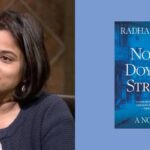What Completism Can Teach Us About the Creative Process
Rhian Sasseen Considers the Lost Art of Prolonged Artistic Growth
Lately, I have been interested in completism. I have been moved to embrace fannish obsession, to consider a writer’s bibliography deeply, to try and read every book in a single author’s oeuvre (even the bad ones). I’m curious about them all: the books that may have been written out of desperation and for money, the ones that came easily, the volumes that still don’t quite click.
The early ones, too—the books in which you can see the writer still half-formed, still moldable, not yet hardened into whatever self, whatever public pose or affectation, they will later self-consciously sink into. The young writer, scratching out the words and themes they’ll return to over the arc of their career.
This isn’t true for every writer—some arrive on the scene fully formed, and their early works are animated by an energy that is at once youthful and unexpectedly mature. I think of Rimbaud, who from the early poems had it—that ineffable quality—before he lost that gift very quickly. These sorts of writers are the ones who tend to interest me least.
Rather, it’s the ones who took their time, who exhibited a coltish streak before learning to stand upright, that I’m most curious about. The writers who began slightly unsure, a tad unsteady, and yet still utterly themselves. This is a stance more typical to prose writers, as poetry relies so much on the ear. Like musicians, there can be poetry prodigies. For fiction, that’s much rarer.
It is easy to forget that writing is an art that rewards age and experience.There is so much emphasis on the moment of the debut, and on youth, that it is easy to forget that writing is an art that rewards age and experience, and that creative growth is a part of the process. Approaching a writer’s full oeuvre, from the earliest stages to its end, offers us lessons in how to refine our own work.
Often, there is a spareness to first novels, a sense of compression and of blankness. Recently, while reading a new edition of Natalia Ginzburg’s debut, The Road to the City, I was struck by how lean it is, how economical. And yet, it’s still redolent with some of the same tensions and themes that I had encountered before in so many of Ginzburg’s later works.
In the opening pages of The Road to the City, first published in 1945 under a pseudonym, a tone is struck that is not dissimilar to that of Family Lexicon, her beloved 1963 novel. Both share a sensation of pattering footsteps, a volley of voices sailing back and forth. In each, a blister of violence lurks tense beneath the words, the skin of it wearing thin, ready to be popped. Consider, for example, these two paragraphs from the opening page of The Road to the City, as translated by Gini Alhadeff:
Not counting Nini, there were five of us…They say that a house with many children is full of joy, but I don’t think there was anything joyful about our house. I hoped to get married soon and to get away as my sister Azalea had done. Azalea had married at the age of seventeen. I was sixteen but no one had asked me yet. Giovanni and Nini also wanted to leave home. Only the little ones were still content.
Our house was a red house, with a pergola in front. We kept our clothes on the stair railings because there were many of us and not enough closets. “Shoo, shoo,” my mother would say, chasing the chickens out of the kitchen, “shoo, shoo…” The gramophone played all day long and since we had only one record, the song was always the same.
Compare these to the first few paragraphs of Family Lexicon, as translated by Jenny McPhee:
At the dinner table in my father’s house when I was a girl if I, or one of my siblings, knocked a glass over on the tablecloth or dropped a knife, my father’s voice would thunder, “Watch your manners!”
If we used our bread to mop up pasta sauce, he yelled, “Don’t lick your plates. Don’t dribble! Don’t slobber!”
For my father dribble and slobber also described modern painting, which he couldn’t stand.
They are different, and yet they share similar elements: the chaos of family life, the parental chastising, a mention of art that proves disappointing in some way. A certain timbre of voice: clean, matter of fact, what critics call “unsparing.”
The paragraphs are longer in the first but the work is shorter; paradoxically, the paragraphs are shorter in Family Lexicon but the book itself is at least twice as long as The Road to the City. Furled in that first book are the themes and structures, the signature interests and flourishes, that Ginzburg would refine and hone in the years to come. A series of literary leitmotifs.
As a reader, it’s exciting to realize these patterns. Seeing the ways in which writers approach these interests is an opportunity to rethink and reframe one’s own obsessions or points of fascination. It’s a remix of sorts, and this is true whether the work appears on the page or the screen. Vengeance Is Mine, Marie NDiaye’s latest novel to be translated into English (by Jordan Stump), takes as its subject the French legal system, immigration, and infanticide. Like all of NDiaye’s work, there is a heightened quality to the plot’s twists and turns, the interiority of its protagonist. Something strange is at work, something is haunting her.
Reading the book, I marveled at how NDiaye approaches these themes differently in different contexts, in both her own work and her collaborations with other artists, conceiving of them in new forms, new formats, new genres. Because, as I was pleased to discover during the end credits, NDiaye was listed as a cowriter for Alice Diop’s Saint Omer, a film that came out earlier this year covering much of the same territory.
Plot and character details vary, but the themes, the stuff that really matters, are similar enough that the book and the movie have the feel of twinship, if only in spirit. I don’t know what the relationship between the two works are beyond this writing credit, if there is any relationship at all, but as an observer and as a fan, I took a private delight in noticing this connection between the two, that feeling of a secret shared between reader and writer.
My era of completism has made me hungry for that once-doleful concept: promise.With other authors, it’s startling to compare their early and later works and observe when a radical shift in style occurs. Take Virginia Woolf’s first book, The Voyage Out, published in 1915 after many painful years of drafting and redrafting.
Because it’s Woolf, The Voyage Out is inherently interesting, but how different it is compared to the later modernist masterpieces! The plot is straightforward by comparison, the sentences well-written but lacking in the watery musicality of The Waves, To the Lighthouse, or Between the Acts. In those novels, there is a feeling of submerging, the language leaking into your bloodstream; less so in The Voyage Out. But what is exciting about reading The Voyage Out is realizing that a writer can reinvent themselves, they can grow and reshape whenever and however they want.
This idea of growth, of lacking polish at the beginning of a career but maybe creating something worthwhile anyway, is becoming harder to find in the world of American letters. A heavy emphasis is placed on the debut, which is itself something of a risky business for a publishing house—how to market a writer new to the public, how they can best be turned into a product to be consumed.
The writer is encouraged to smooth, smooth, smooth away all imperfections and experiments, to professionalize from an early age, to think always of what the imagined market might want to buy. Novels, not novellas or short stories. Potboilers, rather than art.
Just last month, an op-ed in The New York Times outlined how Cormac McCarthy’s early career was nurtured by an industry less beholden to profit, before coming to the conclusion that such a thing would be impossible now. I’d heard it joked before as to what an MFA workshop might do to Ulysses, but here’s something else to consider: what might an American publishing house have done with Dubliners? More than anything, my era of completism has made me hungry for that once-doleful concept: promise.




















